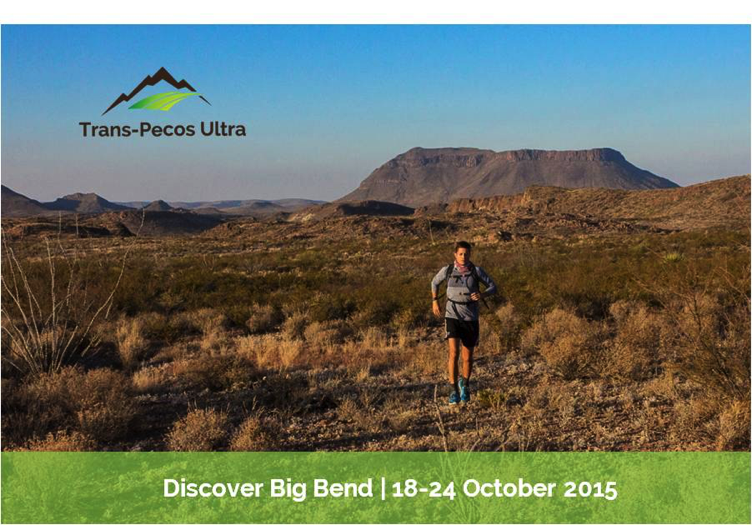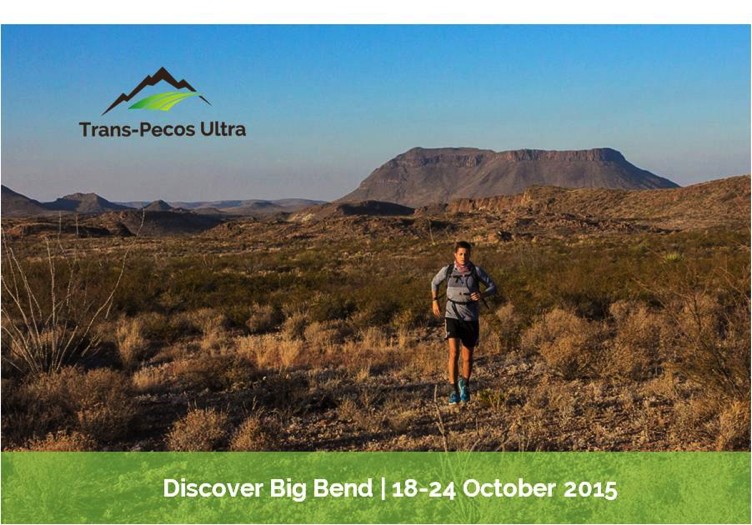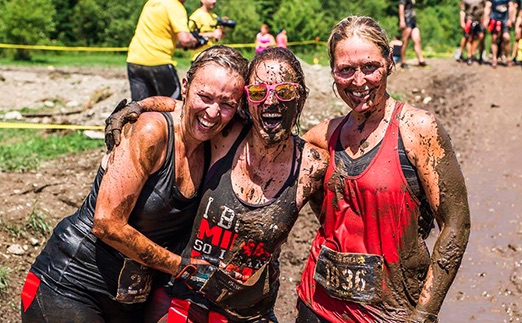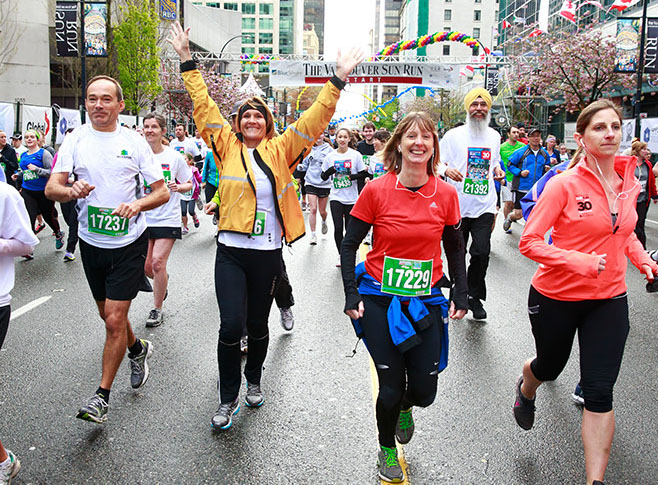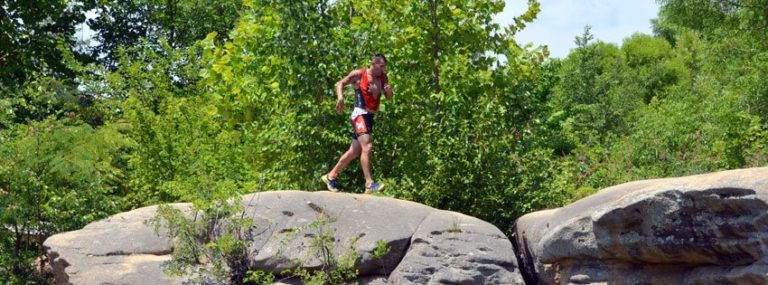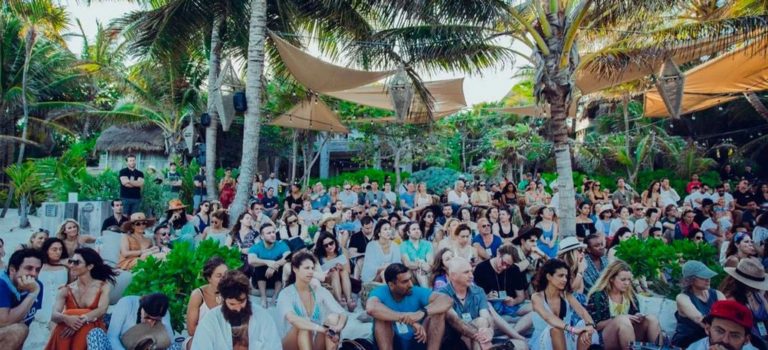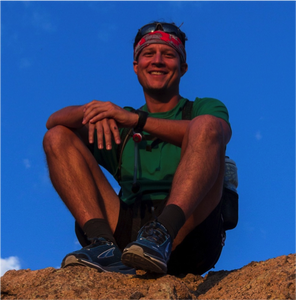
There’s nothing quite like pushing the limits of the human body, as the recent popularity of ultramrathons has shown. Ultramarathons are defined as any event longer than 26.2 miles, many of which occur over multiple days. While these multi-stage races have seen success in Asia and Africa for a decade, the format is relatively recent in the North American market but is picking up steam.
Evidence of this can be seen through the story of Dr. Chris Herrera, PhD. A respected sleep expert, scientist and researcher, he recently decided to leave his successful career and dedicate himself to expanding ultramarathons in the United States. As a labor of passion, he started his own race, the Trans-Pecos Ultra. Trans-Pecos Ultra is the first and only self-supported multi-stage ultramarathon in Texas. The 6 stage, 7-day course traverses 160 miles within Big Bend, a rugged area within the Chihuahuan Desert, the third largest desert in the Western Hemisphere. With its inaugural race set for October of this year, Trans-Pecos Ultra was inspired by a passion for the outdoors and a desire to encourage a healthy lifestyle. Our COO, Greg Spillane, sat down to interview the creator and race director of the Trans-Pecos Ultra, Dr. Chris Herrera, to discuss his background in the endurance industry and how he’s gearing up for the first year of his race.
GS: Could you tell us a little bit about your background, both professionally and from a participant perspective, and about how you got involved in the industry? CH: Back in 2005 I had a lifestyle transformation. At the time I was 24 years old and was leading a very poor lifestyle. I started a new job in October and I took a wellness assessment, and for the first time saw just how unhealthy I had become. I had high cholesterol, high blood pressure, a 38” waist, and 43% body fat. At that point, I decided to change my lifestyle and was fortunate to have found triathlons through one of my brothers and start training. I remember I went to a 24 Hour Fitness and tried to swim across the pool (an indoor pool, so it’s probably 25 yards), and I couldn’t even make it across to the other side without holding onto the edge. I slowly worked my way up from there – after swimming a few times I started running, and then biking, and the next thing you know I completed my first sprint triathlon. Two years later, I had completed several triathlons at all distances, and then completed Ironman Coeur D’Alene in 2007. During this transformation I really gained an interest in endurance training, sports, and nutrition. And in 2007, I went to the University of Sydney to complete a PhD in applied physiology – namely sleep and nutrition. In 2010, I took a job as a researcher at a sports medicine hospital in Qatar, and began to train in the harsh desert climate. That’s when I found out about ultra running and multi-stage desert racing.
GS: Let’s go ahead and dive into the ultramarathons and the multi-stage races. CH: Living in Qatar, I was close to the water and desert so I wanted to find a way to purpose the environment for my training. I found out about the Marathon Des Sables (the big ultramarathon that goes through the Sahara Desert), and that was really intriguing to me. I had been training for endurance events for many years, I’d completed Ironman, and was now doing some multi-day hikes in the region, so combining these two activities made sense. I ended up finding a company called 4 Deserts, and they have a race called the Sahara Race, which is a weeklong multi-stage race in the hottest desert in the word. I started training and was about to register, but due to an injury I switched to volunteering. In February 2014, I went to Jordan where the race took place that year to support the logistics team. What really fascinated me was the experience of the entire event; it was much more than just a race. You have 100 to 200 people coming from all over the world, and they basically form this “nomadic tribe” as I like to say. For seven days the competitors, staff and volunteers travel as much as 160+ miles in search of adventure and sustenance, sharing with each other the ups and the downs of the journey. By the end of the race, I just fell in love with the whole experience. To see people who were 25 and those who were 74 competing and doing the same distance each day and cheering each other on is really amazing. You witness people of all backgrounds, of all ages and sizes doing these races, and I wanted to re-live that as soon as possible when I left Jordan. Back in the US, on sabbatical, I was working on a few business ideas of my own but quickly realized this passion for adventure, experience, and fitness was the foundation for my future. It was at this point, that I started to research the industry of multi-stage ultramarathons and focused on North America and later Texas, a land both vast and historical, and where I was born.
GS: This is going to be the first year of the Trans-Pecos Ultra? CH: Yes.
GS: What is the typical time it takes to finish each of these stages? I’m assuming there are some people that are more competitive than others who are trying to finish as quickly as possible, then there are some that are walking and looking at it more from an experiential perspective – how do you see the mix? CH: The race is open to anyone capable of meeting the cut-off times which are calculated based on a pace of about 2.5mph. Keep in mind that the competitors are required to carry their own pack with the necessary equipment and food to complete the journey, so any pace is to be acknowledged. So, out of 100 people, you will have about 10% who are going to try and race each stage – and possibly win the race based on the lowest accumulated race time. So for these 10 people, they will complete a desert marathon in about 4-5 hours each day for the first four days. Then on the 50-mile stage they will finish between 12-15 hours all in one effort. On the flip side, people with a brisk walk pace for most of the course will complete the 26-mile stages in about 10-12 hours, just before the cut-off time. It will take them about 28-34 hours (including sleep at overnight checkpoints) on the long, 50-mile stage. In the middle, you have people who mix jogging and walking. They will finish each of the 26-mile stages in about 6-8 hours and take about 18-28 hours (including sleep) on the long, 50-mile stage
GS: As you’ve gone from participant to race organizer, what are some of the challenges maybe you didn’t expect that have come up? CH: I will definitely admit that I’m a newbie when it comes to the race organization side of things, but I suppose the years running multi-national research projects and participating in events is helpful. One of the most significant challenges that I’ve been faced with is just the time required to get approvals and logistics in place on a multi-day event like this. Some of the things that stick out the most are the course location – first you need to settle on a location, then you need to design the actual course and get approvals, and that can take anywhere from a couple of months to half a year. Then just getting all of the other things in place like hotels, equipment, staff, and potential sponsors can take a long time – in fact it’s still going on. Actually, this event is an all-inclusive event so that means we’re doing a little bit more logistics on the back side of things when it comes to sorting out the hotels, registration locations, transport, and all that kind of stuff. Something that did come up was when I was very close to a signed contract with a hotel vendor – it didn’t go through and I was forced to find another location – so that was an almost 6-month ordeal. When I moved home to the US in December of 2013, I gave up my professional career and quickly came to the realization that I needed to do something else. I discovered that sports events and outdoor environments were much more rewarding for me, and a lifestyle that I really wanted to be lead myself. So, now I’ve spent a little over a year planning for this race.
GS: When you’re talking about putting something on like a 160-mile race through the desert, I could imagine designing the course had many layers of complexity – can you help me understand how that process went? CH: Ok – well by the time I had come back to America I had been living as an expat for almost 8 years and had traveled through many countries. I knew setting up a race like this needed to – well, have a draw for the participants. But why not Texas – I kept asking myself – it’s huge! But one of the logistical challenges is the fact that Texas is pretty much private land – there’s so many private ranches and small land owners that it’s hard to find 160 miles of terrain that you could run without getting, say, 50 different approvals. I went through a couple different sites in Texas, but as a child I was always told about Big Bend (basically a vast, remote area of Texas with desert terrain and mountains which separate the US from Mexico). So I started driving all around West Texas to remote areas, camping and meeting with local judges and land owners – as I said, this was a full-time project for me. One day I met with Barrett Durst, the superintendent of Big Bend Ranch State Park, who was very receptive of the idea for a race. Texas Parks & Wildlife has about 300,000 acres of public land and 283 miles of track in Big Bend, so it seemed at that point I had the area – and that definitely gave me the excitement I needed to keep coming back to develop a course. Another thing, more specifically, is obviously safety – having longer, mountainous stages and multiple days – both day and night – safety is a paramount issue. One of the many logistical challenges of this course is to make sure that we can have checkpoints within 6-10 miles of each other. That may not sounds like much, but it can be quite a challenge when it comes to the rugged terrain, because you need to get trucks and supplies there. So, oftentimes you might want to run into this canyon or through that valley, but you just can’t get any checkpoints there – it takes some time to really hash out all that stuff.
GS: Shifting a bit to the promotion, advertising, and marketing aspect of this – how has that gone? Getting the word out, promoting, marketing, getting people interested and learning about the event, and registering eventually? CH: I’ve been involved with two different muti-stage ultramarathons around the world and it’s definitely a niche community. The people who are involved in organization and the participants and volunteers are great people. When I spoke to some of the competitors and asked them how they find out about the events, it’s basically just word of mouth and online presence. The multi-stage races like Trans-Pecos Ultra are 100-200 people and that’s for a reason – it’s not just because that’s who we can get, it’s because it creates that experience I mentioned earlier – and strong bonds are formed. So I’ve reached out to the people I met in different regions of the world, and that’s gone well. As a marketing strategy, I think it’s important to showcase the region and the experience so that people want to discover the land and culture while challenging them both physically and mentally. In terms of specific marketing, I rely on my online presence – the website and social media. That’s one of the reasons why I liked the Events.com strategy – it’s also focused on social media and sharing in experiences. I hope to partner with others who also share this viewpoint and I think it’s important to just allow participants to easily share an experience with others – I hope that’s going to create the snowball effect in getting the word out there and lead to registrations.
GS: I was hoping to talk a little bit about sponsorships – obviously there’s a very specific group of people that tend to do these types of events, which I could see how that could be attractive to a sponsor. Can you help me to understand the journey you’ve gone through, how that’s been, looking for different sponsors? CH: I group sponsors into two categories – things I need and things I want. So the things I need are things like hotels, locations, registration, awards, etc. The things I want would be name brand sponsors (which could be anything from large retailers to local businesses – like a brewery for example). I think these two categories give me direction and I’m just focused on the things I need first – so I just reached out to these groups. Basically, I have researched and created very clear demographics and approach sponsorships as more of a partnership such that it’s sort of a win-win; yes there is some co-branding, but you’re also giving some ROI to both parties. And finding people who equally share a passion for either endurance events and/or Big Bend and Texas is important because I want to support others along the way too.
GS: Now that you’re basically full-time in running this race, and it’s just a tremendous amount of work across the board in getting something like this organized, are you able to do it all yourself or do you have a team helping you? How does that look? CH: There’s no team right now – I’ve had general support along the way from friends and family and some industry advisors – and basically anyone I can get to listen to me! For example, when working on logos and the website I reached out to a few different people for advice and the feedback has been very helpful. On a daily basis it’s just me, but I hope to have more people on board – that’s where the sponsorships and funding come into play. Recently, I have recruited Dr. Aaron Reilly, DO who will be the Medical Director. He’s doing a lot of work on the medicolegal issues of having a full medical support staff here in Texas during the race. Introducing this race and myself as race organizer, I hope to be a partner in supporting this industry and the wonderful people who help make it happen. The main thing for me is to follow my passion for adventure and health. I hope showcasing the race and the stories around it will help promote others to lead a healthy lifestyle – because I have personally been through this journey and now support is very helpful. Of course, running 160 miles in the desert is obviously one extreme – but the format is open to all and can be accomplished by reaching smaller goals along the way.
GS: Do you see your career moving forward as continuing to grow this industry, and being a partner to it like what you mentioned, or do you see yourself picking up your private practice and getting back into research? Or, maybe spanning into a different direction, but building upon your previous career? CH: Largely, I’ve moved on from being a professional scientist. But being a researcher, I think it’s important to take information and use it in new way. I have a few different ideas in terms of my 5-10 year plan – and clearly one is to expand on this event to have others like it. But, more specifically – I hope to use my experience and skills in research to further support the industry. For example, if I can partner with academics and analysts, then we can begin to understand the reasons why ultramarathons are becoming so popular – who does them and why and what makes for the best experience. I think this type of information would be useful to everyone, especially to create better events. It would also be great to study how running an event like this affects the body. So, from a more scientific point of view, there’s a lot of exciting projects. Ultimately, there’s going to be more business ideas I want to put my hands on, but there’s always going to some element of human experience – whether that’s the science behind the behavior or the actual experience of adventure.
GS: One last question – what’s the best piece of advice you’ve gotten as you’ve undertaken this? CH: The one thing that sticks out is when multiple people say, “if this is something you want to do, then go for it.” Although, I am personally limited in resources, I am not limited in creativity and determination. I love being outdoors and going on adventures – and Trans-Pecos Ultra gives this to me and will to others as well. So, I am focused on making this event a success. Personal growth, health and wellness are also important to me, so I think the most authentic thing to do is to just go for it! I’m just going to crash and burn if that’s what it takes to make it happen – but so far everyone has been very supportive and some have even registered!
For more information about Trans-Pecos Ultra and to register for the race, visit Trans-PecosUltra.com.
Follow @TransPecosUltra on Facebook, Twitter and Instagram.
